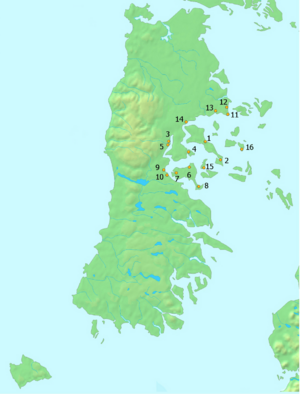Churches of Chiloé facts for kids
| UNESCO World Heritage Site | |
|---|---|
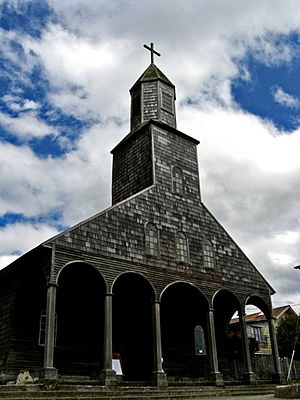
The Saint Mary Church (Iglesia Santa María) in Achao is one of the oldest churches in Chiloé.
|
|
| Location | Chiloé Archipelago, Chile |
| Includes |
|
| Criteria | Cultural: ii, iii |
| Inscription | 2000 (24th Session) |
The Churches of Chiloé are a group of very special wooden churches located on the Chiloé Archipelago in Chile. They are famous for their unique building style, which is unlike anything else in the Americas.
These churches were built in the 1700s and 1800s. At that time, Spanish missionaries and the local people of Chiloé worked together. The Spanish brought their ideas about religion and church design, while the local people used their expert shipbuilding and woodworking skills. This mix of European and native cultures created a beautiful style known as mestizo culture.
Instead of stone, these churches are made entirely from local wood. They are covered in wooden shingles, like tiles, to protect them from the rainy weather of the islands. Because of their unique history and design, UNESCO named them a World Heritage Site in the year 2000. This means they are considered a treasure for all of humanity.
A Unique Building Style
The churches of Chiloé are a perfect example of how people can adapt to their environment. The islands have a very damp and rainy oceanic climate, so builders needed materials that could last. They chose native timber, which was plentiful on the islands.
The builders were not just carpenters; many were skilled shipbuilders. They used their knowledge of building strong wooden ships to construct the churches. This is why the ceilings of many churches look like the hull of an upside-down boat. This clever design helped the buildings stand strong against wind and rain for centuries.
The 16 World Heritage Churches
Sixteen of the more than 70 churches in Chiloé are protected as part of the World Heritage Site. They are located in the central and eastern parts of the archipelago. Each one has its own unique charm and history.
| Code | Name | Town | Photo |
|---|---|---|---|
| 971-001 | Church of Achao | Quinchao |  |
| 971-002 | Church of Quinchao | Quinchao |  |
| 971-003 | Church of San Francisco | Castro |  |
| 971-004 | Church of Rilán | Castro |  |
| 971-005 | Church of Nercón | Castro |  |
| 971-006 | Church of Aldachildo | Puqueldón | 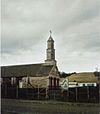 |
| 971-007 | Church of Ichuac | Puqueldón |  |
| 971-008 | Church of Detif | Puqueldón |  |
| 971-009 | Church of Vilupulli | Chonchi | 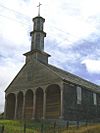 |
| 971-010 | Church of Chonchi | Chonchi | 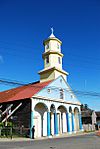 |
| 971-011 | Church of Tenaún | Dalcahue | 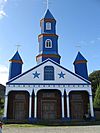 |
| 971-012 | Church of Colo | Quemchi | 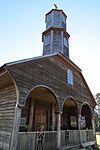 |
| 971-013 | San Juan Bautista | Dalcahue | 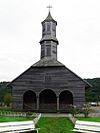 |
| 971-014 | Our Lady of Sorrows | Dalcahue | 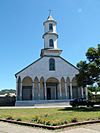 |
| 971-015 | Church of Chelín | Castro | |
| 971-016 | Church of Caguach | Quinchao |  |
See also
 In Spanish: Iglesias de Chiloé para niños
In Spanish: Iglesias de Chiloé para niños
- History of Chiloé
- Architecture of Chiloé


